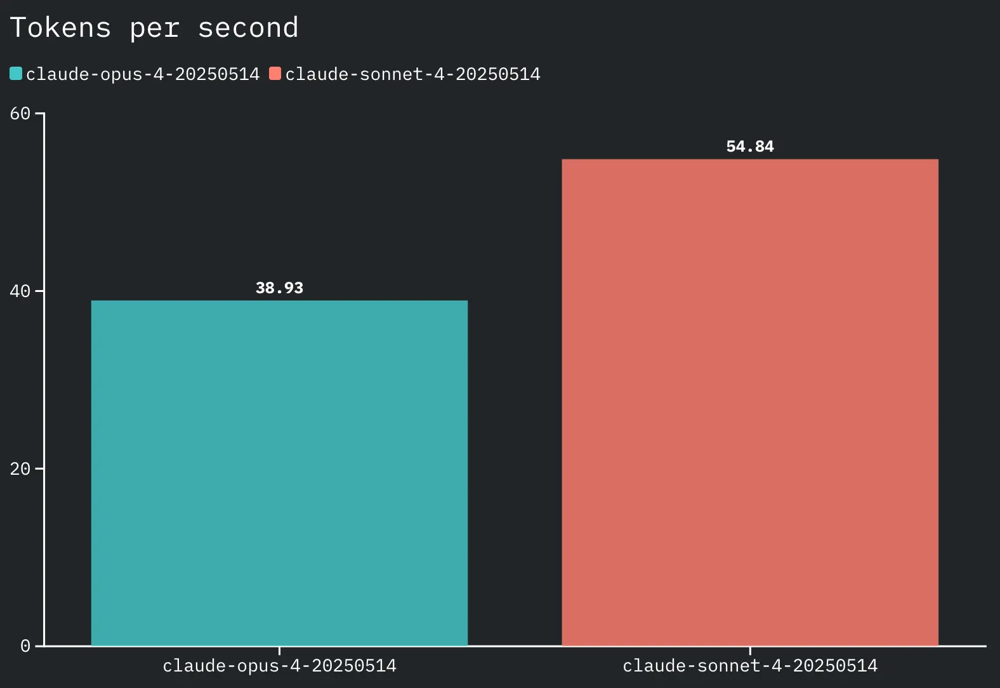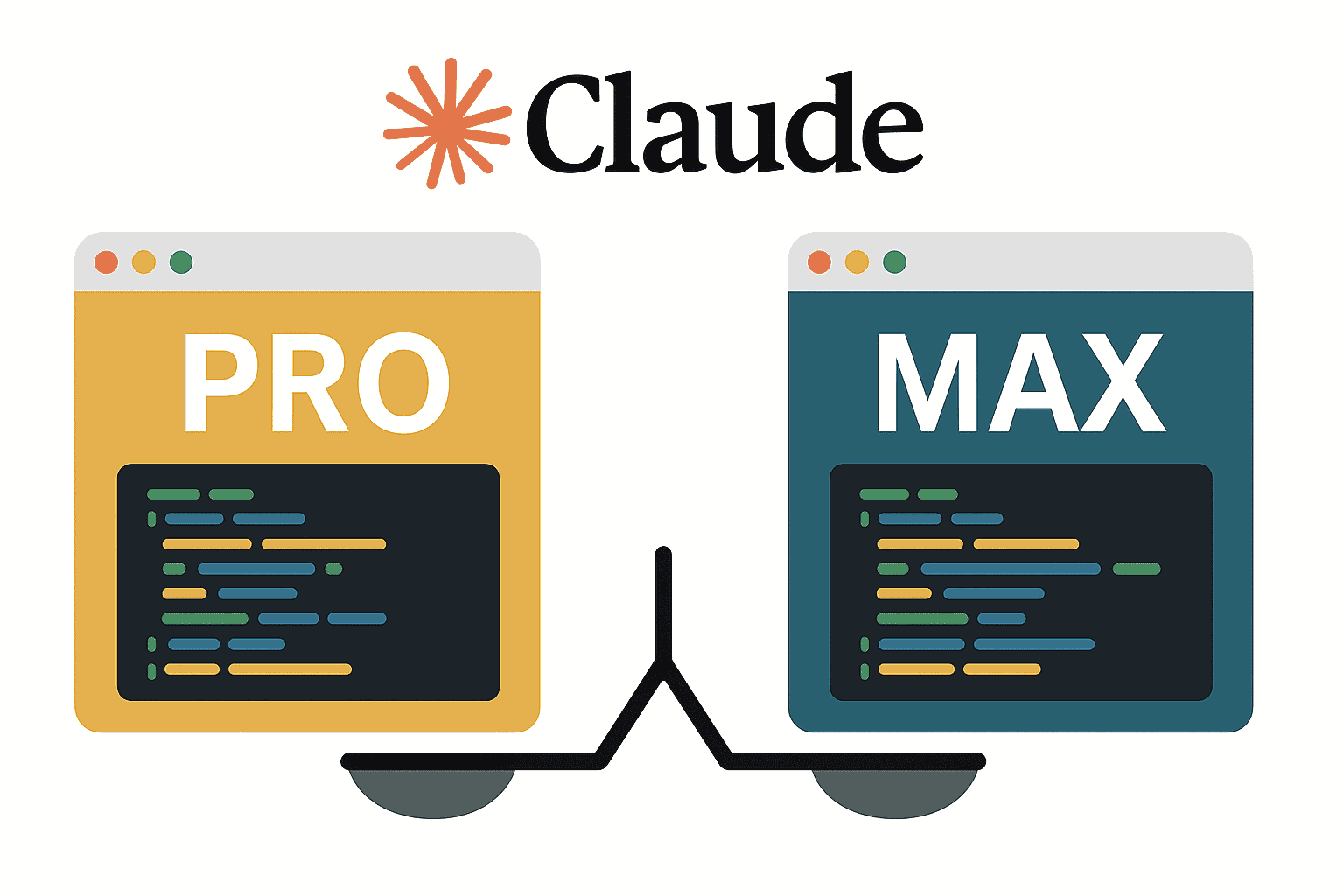Choosing the right Claude AI subscription tier is crucial for software developers who rely on this AI assistant for coding help. Anthropic’s Claude offers multiple plans, with Pro and Max being the key individual tiers. In this comparison, we’ll explore Claude Pro vs Claude Max to see which plan provides the best value for programmers. We’ll cover their model access, context lengths, usage limits, coding performance, and how each tier suits different developer needs.
Claude Pro and Max at a Glance
Before diving into use cases, here’s a side-by-side feature comparison of Claude Pro vs Max for developers:
| Feature | Claude Pro (Paid) | Claude Max (Paid) |
|---|---|---|
| Model Access | Access to Claude Sonnet (highly capable coding model) and other models like Haiku. Opus model not available via Claude Code CLI (web access to Opus is available). | Access to Sonnet and Opus (Anthropic’s most advanced model) on all interfaces. Can switch models (e.g. use Opus for tough tasks) with CLI commands. |
| Context Window | Up to 200k tokens context window for conversations and code (sufficient for long code files or documents). | Up to 200k tokens context (same maximum context as Pro in the current consumer tiers). Enterprise plans can offer larger context windows beyond 200k if needed. |
| Token & Usage Limits | Standard usage limits: ~45 messages per 5-hour session (resets every 5h). Weekly/monthly caps in place (suitable for light to moderate coding). Effectively ~10–40 Claude Code prompts per 5h in CLI use. Rate limit ~5 requests/minute in practice. | High usage: Choose 5× or 20× Pro’s usage. ~225 messages/5h at 5×, or ~900/5h at 20×. This supports ~50–800 CLI prompts per 5h. Much higher weekly allowances (e.g. 15–35 hours of Opus use at 5×) for heavy-duty coding. Similar rate limits per minute (designed for sustained use without hitting quotas)†. |
| API Access | No direct API credits included (Pro is for the Claude chat apps and Claude Code terminal tool). Any API integration requires separate pay-as-you-go API billing. | No API credits included by default (Max is also a chat/CLI subscription). However, Max users often get priority API capacity if they use Claude via Anthropic’s platform. For programmatic pipelines, consider Claude’s API (token-priced) or enterprise plans. |
| Coding Performance | Excellent for everyday coding tasks. Uses Claude Sonnet: fast responses (~54.8 tokens/sec throughput) and low latency, so generating code or debugging is swift. Sonnet handles ~90% of programming needs accurately, though very complex or large-scale tasks may sometimes require extra iterations. | Top-tier performance for complex coding. Opus model available: more robust on difficult multi-file or ambiguous tasks (rarely produces flawed code). Opus provides deeper reasoning for tricky bugs or planning large projects. It’s slightly slower (~38.9 tokens/sec) than Sonnet, but trades speed for superior accuracy on hard problems. |
| Additional Features | Claude Code access on web and terminal (run code, create files). “Extended thinking” mode to let Claude think longer or use tools for complex prompts. Web search and internet access for coding research. Projects feature for organizing chats and caching context. Up to 1 GB/day file uploads (25 MB per file) for code files or data. | All Pro features, plus “Memory” across conversations (Claude can remember info persistently between chats). Higher output limits for generation length (Max can produce longer code files or documentation in one go). Priority access during peak times (faster responses when usage is high). Early access to new Claude features (beta tools, connectors) ideal for power users. File upload quota also ~1 GB/day (higher on request). |
| Monthly Price | $20/month (monthly billing) or ~$17/month with annual plan (billed $200/year). No additional API fees for included usage. | $100/month (5× usage) or $200/month (20× usage) per user. Choose based on needed throughput. (Max plan is month-to-month; Team/Enterprise plans offer volume discounts for companies.) |
<small>† Note: Claude’s API is separate from these subscriptions. Pro/Max plans primarily cover the Claude chat interface and Claude Code tool, not unlimited API calls. “Rate limits” here refer to chat/CLI usage pacing; the API has its own token-based limits.</small>
Developer Use Cases for Pro vs Max
Both Claude Pro and Max can assist developers, but they shine in different scenarios:
- Claude Pro for Casual Coding: The Pro plan is ideal for individual developers who need an AI partner for moderate tasks. For example, a freelance programmer can use Pro to generate code snippets, write small scripts, or get debugging help without worrying about immediate pay-per-token costs. Pro’s access to the Claude Code sandbox means you can execute code in the terminal or have the AI manipulate files, which is great for automating unit tests or prototyping algorithms. The usage limits (dozens of prompts every few hours) are usually enough for writing a function, explaining API documentation, or occasional pair-programming assistance. In short, Claude Pro covers casual code generation, scripting, and documentation support comfortably.
- Claude Max for Heavy-Duty Development: The Max plan is designed for power users and enterprise-level coding workloads. If you’re constantly coding with AI assistance – e.g. working on a large codebase, doing batch code generation, or iterative refactoring – Max provides the needed headroom. Developers at startups or tech companies might choose Max to integrate Claude into CI/CD pipelines or data processing scripts (though API usage may require separate setup). With up to 20× the usage of Pro, Claude Max can handle long-context workflows like analyzing thousands of lines of code across multiple files, or engaging in an hours-long interactive coding session. It’s well-suited for building features with the AI continuously (e.g. generating dozens of variations or running extensive debugging sessions). Max also enables using the Opus model for complex logic and batch generation tasks – for instance, generating an entire module or processing large datasets with code, where the stronger reasoning of Opus is beneficial. In summary, Claude Max excels at heavy-duty coding, large-scale AI coding assistance, and integration into developer pipelines that run frequently.
Pros and Cons of Each Plan for Programmers
Both tiers have their advantages and trade-offs for coding use:
- Claude Pro – Pros: Cost-effective for individuals or freelancers (only $20/month). Access to powerful models (Claude 4 Sonnet) that are very capable in coding – often sufficient for ~90% of tasks a developer might encounter. Faster generation speed and lower latency, making it feel responsive when writing or reviewing code. Includes Claude Code features for running code and using the AI in a developer workflow. Great for debugging, getting code suggestions, or writing documentation and unit tests. Also offers project organization and the ability to use “Extended Thinking” mode for complex problems (Claude can reason more deeply or use research tools). Overall, Pro gives a huge productivity boost for coders at a relatively low price.
- Claude Pro – Cons: Usage limits, while higher than free tier, can still be hit by enthusiastic coders. The ~45 messages per 5 hours cap means if you’re in an intense coding session asking lots of follow-up questions or analyzing large files, you might exhaust the session limit and have to wait (the limit resets every 5 hours). There are also weekly/monthly usage caps behind the scenes, so you can’t use it continuously 24/7 on massive projects. Another limitation is model access – Pro users do not get the Opus 4 model in the Claude Code CLI environment. This means for the toughest coding challenges, you’re relying on Sonnet; Sonnet is strong, but in some complex cases the code or answers it gives might be a bit off or require more iterations to refine. In short, Pro may struggle with very large-scale or complex coding tasks and high-volume usage due to these limits.
- Claude Max – Pros: Virtually all the capabilities a developer could want. The much higher usage allowance is the biggest selling point – you can work extensively with Claude without interruption, which is critical if you’re integrating it into your daily development or using it for hours at a time. Even the lower Max tier (5×) provides around 225 messages per 5 hours, which is plenty for continuous coding, and the 20× tier is ~900 messages/5h – effectively removing friction for all but the most extreme use cases. Max users also get priority access during peak times, so the AI remains responsive even when traffic is heavy. The availability of Claude Opus 4 is a major plus for coders: Opus is Anthropic’s most advanced model, known for its superior ability in complex reasoning and coding accuracy. For example, Opus can coordinate changes across a large codebase or handle ambiguous project specifications more reliably than Sonnet. Many developers find that Opus-generated code is correct on the first try far more often, especially for tricky problems. Max also has the “memory across conversations” feature, which means Claude can retain long-term knowledge of your preferences or project – useful if you want it to remember your codebase context or coding style beyond a single chat session. All in all, Max is ideal for professional and team coding workflows that demand consistency, power, and the highest quality outputs.
- Claude Max – Cons: The main downside is the cost – at $100 to $200 per month per user, Max is a significant investment (5–10× the Pro plan cost). It’s geared toward developers who absolutely need the extra capacity or whose productivity gains justify the price. Another consideration is that even Max is not truly “unlimited” – extreme power users (like those running Claude-driven coding agents constantly) have encountered newly introduced weekly caps or throttling if they push the limits too hard. Anthropic has implemented fair-use policies to prevent abuse (such as people running Claude 24/7 or sharing accounts), which can occasionally affect legitimate heavy users with brief cooldowns. Additionally, while Opus is excellent, it is slower and consumes more token quota – some tasks might feel laggy compared to Sonnet, and you need to be mindful of using Opus for only the toughest jobs (since it’s 5× costlier per token in API terms). In summary, Max’s drawbacks are its high price and the fact that it’s still not infinite usage – but for most developers who need Max, these are acceptable trade-offs for its capabilities.
Coding Performance: Speed vs Quality

Claude Sonnet (Pro plan) tends to generate code faster (higher tokens per second) than Claude Opus. Sonnet averages ~54.8 tokens/sec vs Opus’s ~38.9 tokens/sec in tests. This means Pro users see quick answers and snappy code generation, while Max users using Opus might wait a bit longer for complex outputs.
When it comes to code quality and output differences, the general consensus is that Sonnet vs Opus reflects a speed vs thoroughness trade-off. Sonnet (available in Pro) is highly capable – it often matches or even outperforms Opus on standard programming benchmarks and can handle day-to-day coding tasks like writing functions, debugging errors, or producing explanations with ease. In fact, developers report that Sonnet hits the mark for most tasks, and its mistakes are relatively rare or minor in simple scenarios.
However, on more complex coding problems, differences emerge. Opus (available to Max subscribers) is regarded as the “go-to” for challenging tasks such as multi-step algorithms, large refactors, or tasks with ambiguous requirements. For example, one user noted that Sonnet’s code output could occasionally be “quite shitty” for intricate tasks, whereas with Opus it’s “almost never a problem”. Another anecdote from a developer: when asked to extract images from a PDF using AI, Claude Sonnet produced an answer that was about 80% complete, requiring manual fixes. Claude Opus, on the other hand, tends to nail such tasks “at least functional out of the gate”, delivering a correct solution on the first try. This highlights Opus’s stronger reasoning and extensive training – it’s better at understanding complex, less-common requests and producing robust code for them.
The bottom line on performance is that Pro (Sonnet) is extremely good and even faster for interactive use (making it great for quick iterations and getting ideas out). Max (Opus) provides an extra layer of reliability and depth for when you need it – it’s the safety net for when you push Claude to its limits with complicated projects. Many coders use a hybrid approach: even on the Max plan they’ll use Sonnet for speed on routine coding, and switch to Opus when accuracy and problem-solving trump speed. Keep in mind that with either plan, Claude has a 200k token context, so it can handle very large code files or transcripts; the difference is how well the model utilizes that context for reasoning. Sonnet is optimized for high-throughput and tends to be very good up to a point, while Opus digs a bit deeper (at the cost of being slower and consuming more of your usage quota for big outputs).
Final Recommendation: Which Plan to Choose?
So, Claude Pro or Max – which is the best plan for coding? It ultimately depends on your development workload and budget:
- Freelance Developers / Occasional Coders: If you’re a solo developer or hobbyist who uses Claude to assist in coding here and there (perhaps to generate snippets, solve programming questions, or expedite writing documentation), the Claude Pro plan is likely the best fit. It’s affordable and offers all the core features needed for coding productivity. You’ll get to use the excellent Claude 4 models (including Sonnet) and the Claude Code execution environment. Pro’s usage limits are generally sufficient for a few hours of coding help per day. For most freelance devs or students working on small projects, Claude Pro provides the best bang for the buck. You won’t pay for capacity you don’t need, yet you’ll still have a powerful AI pair programmer at your side.
- Startup Engineers / Power Users: If you’re a developer who is pushing Claude to the maximum – for example, integrating it into your development pipeline, using it to handle large codebases, or relying on it daily for substantial portions of coding – then Claude Max is worth the investment. The 5× plan at $100/month is often sufficient for a single developer’s heavy use (and you can upgrade to 20× if you truly need nonstop generation). Max unlocks the Opus model which can be a game-changer for complex projects or when you need higher confidence in the AI’s output. It’s the better choice if hitting Pro’s limits would slow you down or if the slightly better quality from Opus will save you time in debugging. Startup teams that aren’t ready for an enterprise contract but have multiple engineers might consider giving a few key members the Max plan, especially for tasks like large-scale code modernization or data engineering scripts where Claude can work continuously. In short, Claude Max is suited for serious coders and small teams who treat Claude as a daily development tool and can justify the higher cost with equally high productivity gains.
- Enterprise Developers / Large Teams: Large organizations should look beyond individual Pro/Max plans. If you have a team of developers, the Claude Team plan or Enterprise plan will be more cost-effective and feature-rich for collaboration (with shared workspace, admin controls, and even larger context windows in Enterprise). That said, if an enterprise developer is choosing individually and the company hasn’t provided a license, they might opt for Max to get the most capability. Generally, enterprises will engage with Anthropic for custom terms – including possibly higher context limits (e.g. some enterprise tiers experiment with 500k or 1M token contexts). For an enterprise-grade programmer, the recommendation is to leverage the official Team/Enterprise offerings, but between Pro vs Max individually, a heavy-use enterprise dev would lean toward Max, while a light-use dev might be fine with Pro and let the nature of tasks dictate upgrades.
In conclusion, Claude Pro vs Max for developers comes down to intensity of use. Claude Pro is the best Claude AI plan for coding needs of most individual developers who want powerful assistance without breaking the bank. Claude Max is the premium plan for programmers who need more – more usage, more consistency, and access to the very best model for the toughest coding challenges. Evaluate your coding workload: if you rarely hit limits and mostly need quick code help, Pro is your friend; if you’re pushing the boundaries of what AI can do in software development, Max will unlock that extra potential. Either way, having Claude as an AI coding partner – at the level that matches your needs – can significantly accelerate your development workflow and productivity. Choose the tier that fits your projects, and happy coding!

